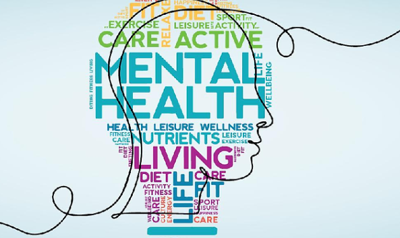
Mental well-being has become crucial nowadays for folks across various age groups in today's world. Individuals are increasingly seeking flexible support systems in response to the rising anxiety and other serious mental health challenges they face. Local resources such as therapists, clinics, and random community support groups have traditionally been the foundation of mental health care.
Powerful online tools have emerged in this era, providing convenience and anonymity almost around the clock with complete accessibility. Online help and local wellness resources can create comprehensive approaches that address individual needs flexibly and empower people. This blended model fosters stronger community connections and yields better outcomes with greater reach in a significant way apparently.
Making a Continuum of Care
The best thing about integrating Local counseling services is that it makes a real continuum of care. Wellness requires ongoing work and support. A person could start their journey with an online mental health test or chat-based assistance and then consult a therapist in person for more in-depth therapy.
People might attend local group therapy sessions and utilize mental health apps daily by tracking their emotions and overall progress effectively. This layered approach gives you both short-term comfort and long-term plans for healing and progress. It makes sure that people aren't left alone between sessions or after finishing a health program.
Individuals can get help from a framework that changes with their requirements over time by using the correct combination of online and local technologies.
Expanding Access to Support
One of the best things about combining online aid with local wellness services is that it makes them easier to go to. Not everyone lives in a place where there are a lot of mental health resources. There are not enough certified experts or specialized treatment centers in rural, neglected areas. Online services fill that gap by giving people instant access to aid, such as therapeutic conversations and information about mental health.
People are better equipped to get regular and multilayer treatment when they have access to local services like therapists, community wellness initiatives, and in-person support groups. The online part helps when in-person services aren't accessible, while the local services give more depth and a personal touch that digital-only platforms might not be possible.
Better follow-through and continuity
A lot of individuals start their health journeys with good intentions, but then lose their way because they don't get enough support. Online tools might help you stay connected between appointments or major life changes. Aftercare is very important for those who are getting well after a crisis or finishing a treatment program. People can stay on track and prevent relapsing if they have online access to support groups, educational materials, or peer communities.
When practitioners inLocal counseling services use digital follow-up or send clients to trustworthy online platforms, it makes it more likely that people will follow through on their treatment recommendations. It's not enough to seek treatment once; you need to keep in touch with the services that will help you recover over time.
Community Connections
Online technologies are wonderful, but they can't replace the major benefits of connecting with people in person. Wellness initiatives in the community, group therapy sessions, and activities in the area all help individuals feel supported in their daily lives.
Online platforms can assist you in initiating the process. Someone getting therapy in their area could also utilize internet resources to keep track of their progress or meet others from outside their area. This back-and-forth builds self-esteem and makes social support networks stronger.
Reaching Underserved Populations
Using both online and local services together is also a beneficial approach to reach those who would not usually ask for help. Teenagers, young adults, males, and individuals from different cultures might have trouble in receiving wellness services. Some of these barriers include shame, expense, and a lack of cultural knowledge.
When these internet technologies are used with local services that know what the community needs, it produces a system of care that is culturally sensitive and open to everyone. Outreach programs help people get both online and offline assistance, depending on how comfortable they are and what problems they are facing. This approach makes support more available and fair for people from various backgrounds.




(0) comments
We welcome your comments
Log In
Post a comment as Guest
Keep it Clean. Please avoid obscene, vulgar, lewd, racist or sexually-oriented language.
PLEASE TURN OFF YOUR CAPS LOCK.
Don't Threaten. Threats of harming another person will not be tolerated.
Be Truthful. Don't knowingly lie about anyone or anything.
Be Nice. No racism, sexism or any sort of -ism that is degrading to another person.
Be Proactive. Use the 'Report' link on each comment to let us know of abusive posts.
Share with Us. We'd love to hear eyewitness accounts, the history behind an article.